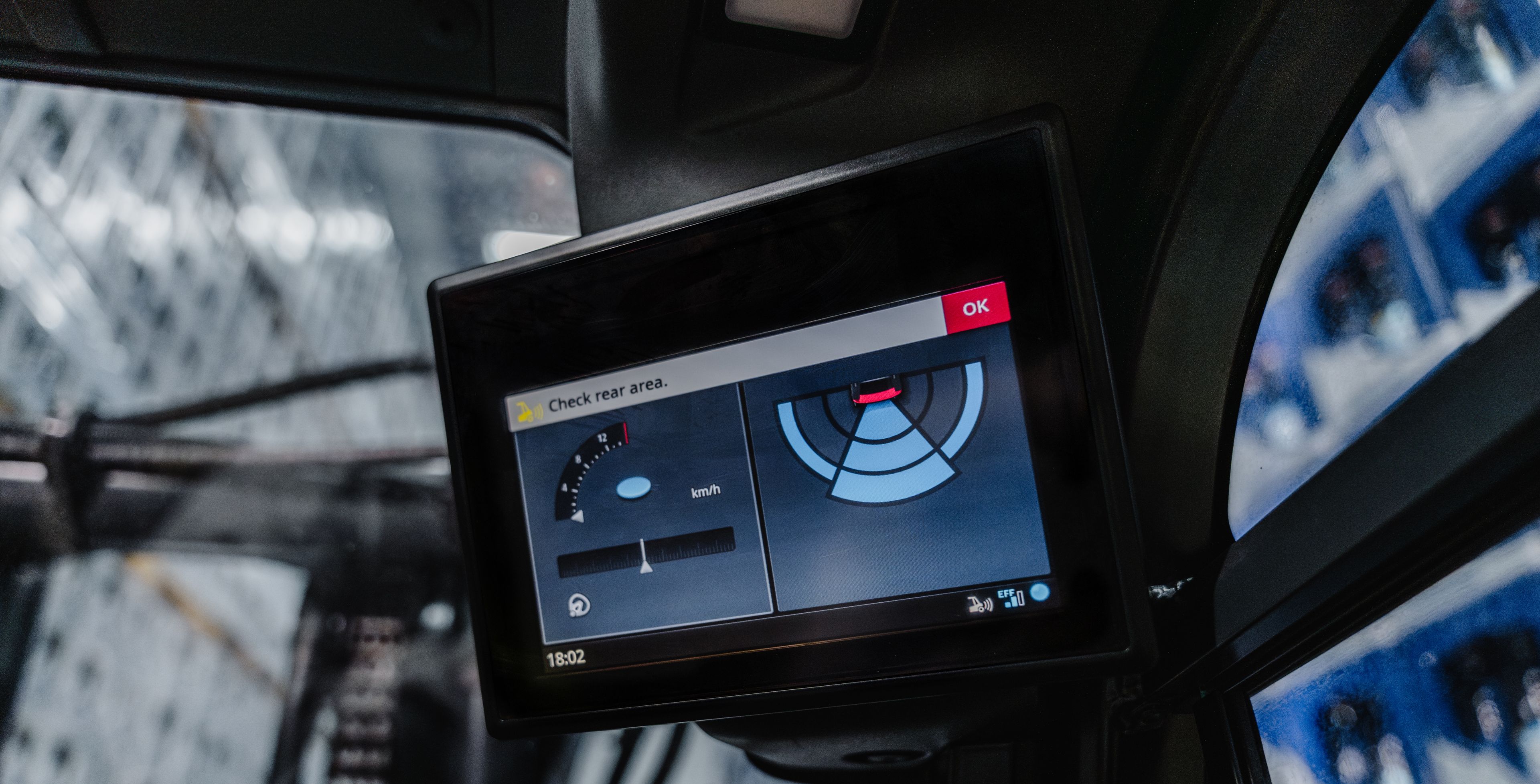Reverse Assist Radar
Why is this important?
More than 50% of accidents involving forklifts and pedestrians occur when the forklift is reversing. This is because predecessors think that those who drive the truck are constantly seeing them, which is not always correct.
The Reverse Assist Radar system can be retrofitted to counterbalanced trucks and registers movement and static elements behind the truck. In an emergency, it actively intervenes in the situation and brakes, which causes the truck to stop. This effectively prevents collisions with pedestrians and obstacles.

How does it work?
- The assistance system detects movements and alerts the driver to danger with a warning on a display mounted inside the cabin.
- The system prevents the forklift from moving if it detects movement while the truck is stationary.
- An audible signal also alerts the pedestrian.
- To continue driving after the warning is issued, the driver must return the accelerator pedal to the starting position.
If the Reverse Assist Radar detects an obstacle, it calculates the dangerous situation in a flash. In doing so, it takes into account factors such as speed, steering angle, lifting height, and distance to the object. If the risk of collision is imminent, the system intervenes in the driving command and automatically brakes with a force of up to 3 m/s². This means that the Reverse Assist Radar brakes significantly stronger than comparable solutions. The braking behavior is always optimally adapted to the individual situation.
Pros
- Increased warehouse safety
- Reduces downtime due to accidents
- Keeps the flow of goods going
